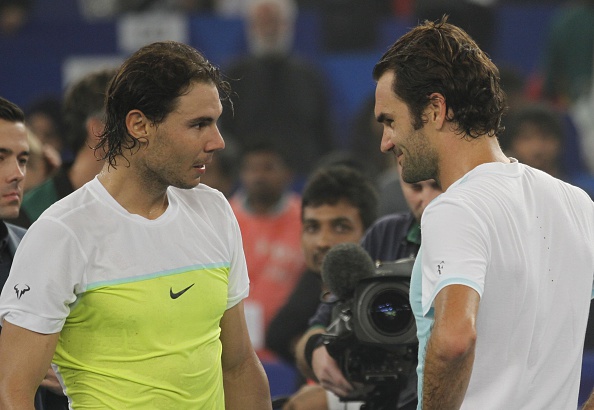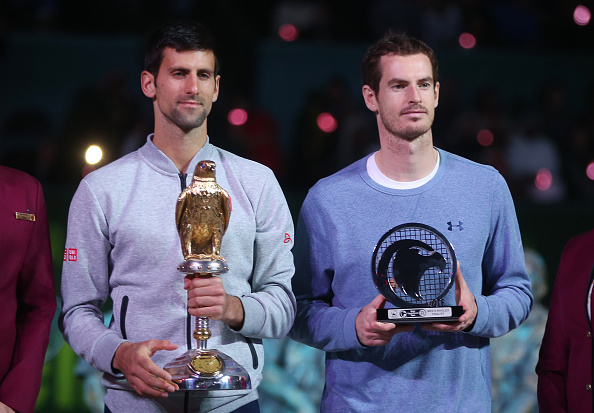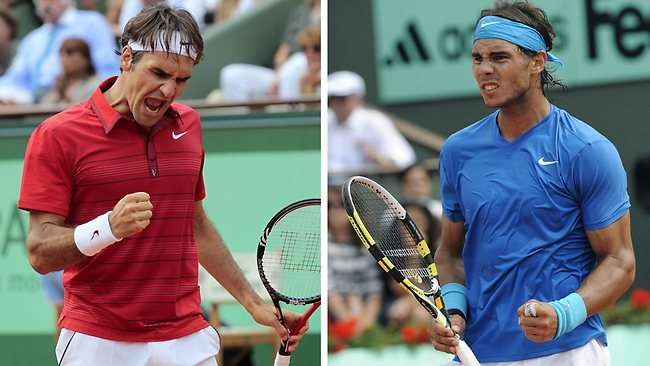
Why no other rivalry in tennis can match 'Fedal'
‘Game of Thrones’ is a big hit amongst the youth. The latest season had a battle scene named “Battle of the Ba****ds”. On a similar line, we have the “Battle of the Underdogs” lined up this Sunday and the battleground is the Rod Laver arena, Melbourne.
Who could have ever imagined that the two most recognised faces of modern tennis would be battling each other in a Grand Slam final as ‘underdogs’?
On one side is the ‘Special One’ of tennis, who didn’t hold a racquet for six months. On the other side is the ‘Raging Bull’, who in the recent past, had created a lot of ‘hush hush’ for his myriad first round exits. Everyone was gushing about a ‘Djoker’ from Serbia and a ‘would be Knight’ from Great Britain but both of them flattered to deceive.
Federer’s feat in Melbourne is an enigma not only to others but also to himself.
Age and fitness had debilitating effects on both the players. But the manner in which both these players have played in this tournament, is absolutely surreal.
The ‘Swiss Bliss’ and the ‘Raging Bull from Manacor’
The Swiss champion is touted as the GOAT (Greatest of All Time) by many. His on-court grace and finesse coupled with elegant shot making are other-worldly. He dismantles his opponents without breaking a sweat and it is this ‘immortality’ that makes him a crowd favourite. His antics off the tennis court and his punctiliousness create a ‘halo effect’.
Nadal, meanwhile, runs and scampers for points. He is resilient and belligerent in his approach and is more ‘mortal’. He is revered by the common man, who relates his or her trials and tribulations with the gumption exemplified by Nadal.
Why the Djokovic-Murray rivalry cannot match the Federer-Nadal rivalry
Looking at the history of tennis, there has always been a ‘vehement rivalry’ between two of the greatest players of their respective generations. From Borg-McEnroe to Becker-Edberg to Sampras-Agassi, the baton has passed from one generation to the other.
When the Sampras-Agassi rivalry waned and almost reached its dusk, Federer burst onto the scene and won everything that was there to win. The fans adored him and soon became loyal to him.
There was also a group of people who wanted someone to challenge the status quo, and there appeared Nadal. This created two legions of fans. This scenario is pretty similar to the US Presidential elections, where there are ‘Core Democratic States’ and ‘Core Republican States’.
The magnitude of the rivalry, the clash of personalities and the surreal on-court displays didn’t leave much space for the ‘swing states’. Hence the committed fans had no reason to change their allegiances.
Djokovic’s achievements are not small and he is already a legend of the game. Murray broke the Britain’s Wimbledon jinx of 77 years and rose to the No. 1 spot with all his frailties. Their fan following in Serbia and Britain respectively is unmatched. But it’s difficult to eclipse a rivalry which is still going strong, whose players are still winning championships.
The clairvoyants can always opine that the size of the ‘swing states’ is going to expand when a 35-year-old Federer and an injury-prone Nadal fail to win trophies. But in the current scenario, the Federer-Nadal rivalry is very much alive and kicking. As the saying goes, “If a smoking Joe Frazier would have had a better record than Ali, then Ali wouldn’t be Ali.”
Is Djokovic-Federer or Djokovic-Nadal better than Federer-Nadal?
The Federer-Nadal rivalry was epic because the Spaniard proved to be the impediment to the ashwamedh yagna horse of Federer. A close look shows that the rivalry is a fairly lopsided one, with Nadal stamping his authority on most of their encounters.
The Spaniard has always been Federer’s bête-noire. Nadal leads the Swiss 9-2 when it comes to Grand Slams and 6-2 in Grand Slam finals.
Certain critics are of the opinion that purely on the basis of tennis skills, a Djokovic-Federer rivalry is much more fascinating. On the tennis court, these two players are constantly trying to outsmart each other in terms of strategy and skill.
Also read: Why do we love and cherish the Federer vs Nadal rivalry?
Both these players play with each other’s mind. Overall, the head to head record is 23-22 in favour of Djokovic, and in Grand Slams, Djokovic leads 9-6. The historic encounter between the two in the 2011 French Open semi-final, is a part of tennis folklore as Federer halted the Djoker’s 43-match unbeaten juggernaut.
Coming to Nadal and Djokovic’s head-to-head count, the Serb leads Nadal 26-23. In Grand Slams, though the Spaniard leads 9-4, and in GS finals, he leads 4-3. The Nadal-Djokovic rivalry is characterised by ruthless competitiveness, stubborn belligerence and a ‘strong physical game’. The physicality becomes a quintessential factor in determining the winner rather than pure tennis skill. They are persistent in their pursuit to outlast the other rather than outsmart the other. The rivalry is akin to the Connors-Lendl mini-rivalry of the 80s.
Great rivalries are evaluated on an aesthetic scale. Contrasting personalities, aided by an attractive style of play attract a broad range of enthusiasts. The Federer-Nadal rivalry is characterised by both myth and mortality.
Nadal has been the perennial David to the Goliath Federer (except in the French Open). Also, the Fedal rivalry is epic because two players at their peak were beating the hell out of each other to impose their dominance. When ‘Djoker’ transformed into ‘Djokovic’, Nadal was all bruised and battered, while Federer was on the wrong side of the thirties.


